Our Summer, such as it is, is well advanced and bits of the Common are beginning to look more Autumn-ey. To me, these Rowan, or Mountain Ash berries are very evocative of Autumn.
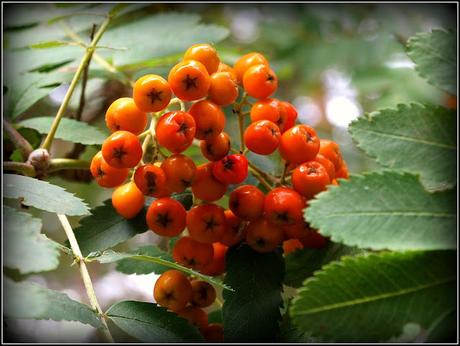
Rowan berries come in a range of colours, from yellow through orange to red, though the redder ones are most common. They can be used when ripe to made a preserve somewhat similar to Redcurrant jelly, though not as sweet. We made some once, but I think the berries must have had some mold on them, because we were very ill when we ate the jelly, and have never made it again!
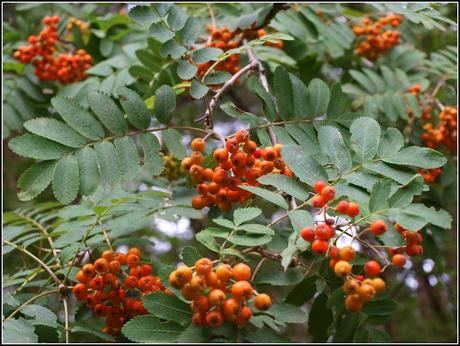
I was looking very carefully for fungi, but I didn't see many. I think it's too dry for fungi at present. This one was evidently fresh though. Nearby there were two or three more of these, just bursting through the surface of the soil.
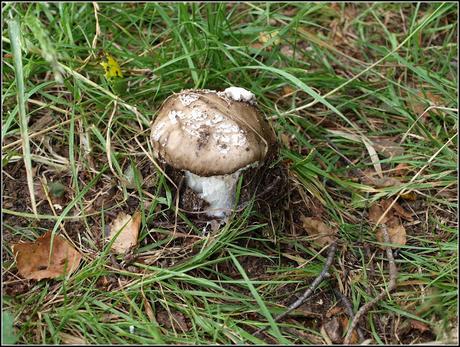
Lots of the trees, like this Birch, are sporting a dashing orange coat of lichen at present:
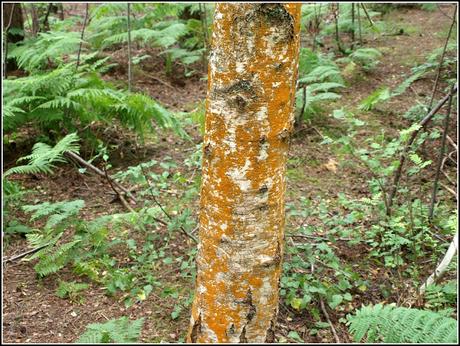
These are the "fruits" of the Arum Lily - Arum Maculatum - looking very impressive. Don't be tempted to eat them though, because they are extremely toxic.
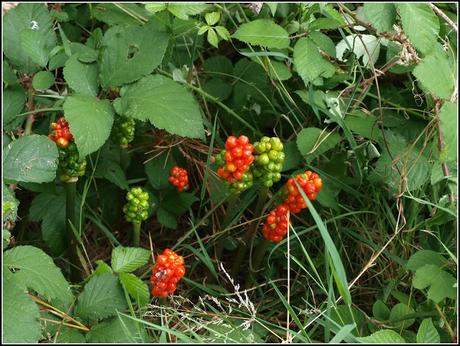
Here's a plant I had not consciously seen before:
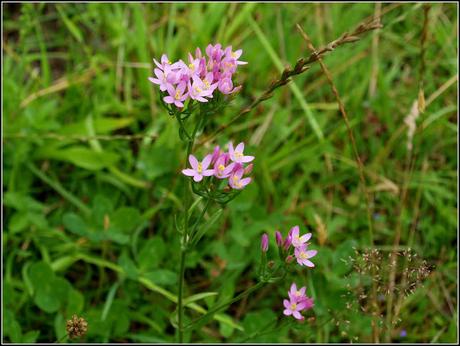
Did you recognize it? It's Common Centaury - Centaurium Erythraea. The flowers grow on stems about 12 inches tall. I found quite a large patch of it just next to a track in one of the more open areas of the Common.
I had to seek help with identifying this next one, which is Enchanter's Nightshade - Circea Lutetiana. Despite its dramatic name, it is apparently not very poisonous.
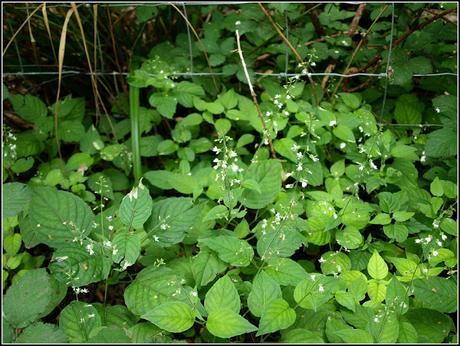
Circea is very invasive, and for this reason seldom used as a garden plant. It's amusing to note that one variety sometimes used in gardens is called "Caveat Emptor", which seems very appropriate in the circumstances!
I didn't see much in the way of animals or birds this time. I expect they were all resting in the heat of the day (it was early afternoon), prior to coming out after sundown. I wonder who might have been hiding in here...
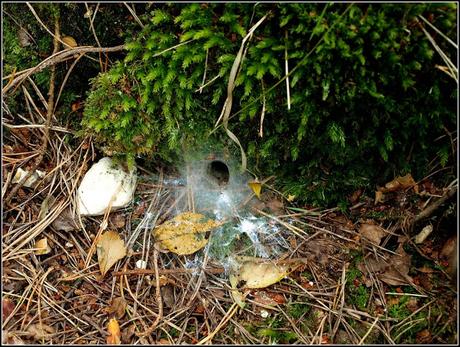
The hole is surrounded by a dense array of spiders' webs, but it's probably not a spider's home. I think maybe the spider is hoping to catch whatever it is that lives there, as it comes or goes.
My most interesting sighting on this occasion was of a really vivid Cinnabar Moth. It very obligingly sat still for a couple of minutes while I photographed it.
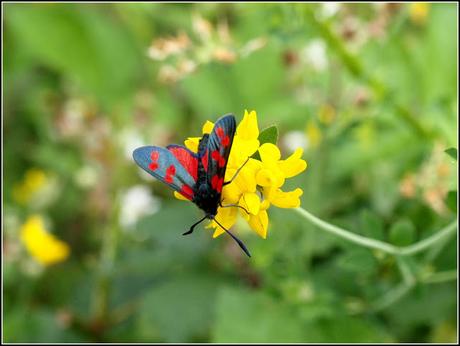
Cinnabar Moths mainly feed on Ragwort. Indeed, Wikipedia tells us "It has been introduced into New Zealand, Australia and North America to control poisonous ragwort, on which its larvae feed."
This is some Ragwort, which I photographed nearby.
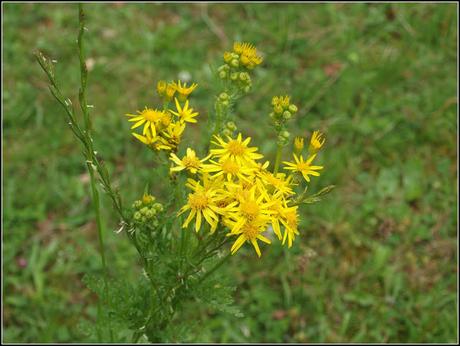
Well, the larvae may feed on Ragwort, but the adult moths evidently enjoy Yellow Vetchling. In this next (zoomed) photo you can see the moth's long proboscis probing deep into the flower to drink the nectar.
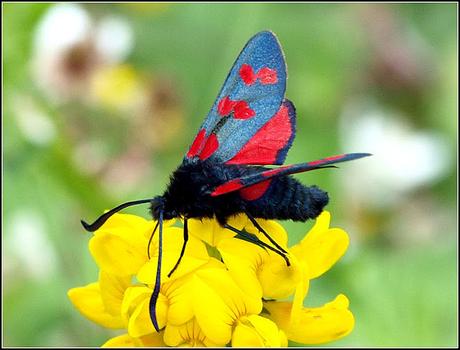
I hadn't realised that Cinnabar Moths were so "woolly"!
I saw this huge old weathered log, and thought "Wouldn't that be great in a childrens' playground?"
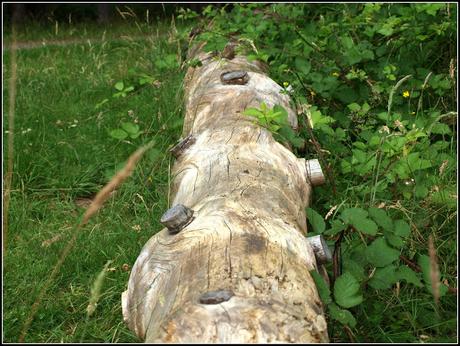
All kids love balancing on logs (and falling off), don't they?
Well, that's a selection of the things I saw this time. I'm sure I'll be back there again soon, and I'm equally sure I'll see something interesting and new!
